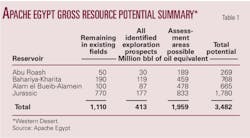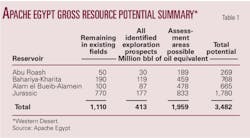Policy makers and business leaders are sharpening their focus on ways to reduce greenhouse gas (GHG) emissions in the belief these reductions could improve the economy, weather, and quality of life. This topic has grown to such global pervasiveness that GHG issues now provide a common touchstone for all industrialized and emerging economies. While the merits and concerns surrounding GHG emissions are too complex to examine fully in a single article, the drive to reduce emissions has identified a universal benefit and is gaining momentum.
When applied selectively, increases in production efficiency reduce GHG emissions and increase business margins. Various regulatory initiatives would require operating improvements to account for GHG reductions of from 2% to more than 10% between 2010 and 2015.1 Overall, increased production efficiency involves:
- Energy recovery; heat losses to the environment.
- Higher mechanical reliability; less shutdowns, flaring, and process venting.
- Improved energy transfer processes—thermal and mechanical.
- Recovery and reuse of processing chemicals and byproducts.
Government regulations at all levels are demanding higher efficiency ratings and stepped up energy reduction programs.2 Individual states also are instituting their versions of GHG reduction programs, which, combined with federal programs, are included in the expanding requirements for project permitting, operations, and GHG reporting.
Communities surrounding US production centers are encouraged to participate in the development of policies that regulate industrial projects and operations in their area. This pattern is being repeated around the globe, albeit at a slower pace in developing nations, with GHG initiatives becoming part of international trade, customs, and tariffs.3
Benchmarking GHG reductions is now an aspect of corporate sustainability. A corporate record of GHG reductions can be considered for the evaluation of preferred suppliers, partnerships, alliances, government regulations, and investor decisions.
Environmental policies that add GHG provisions raise the barrier for market entry, which is a concern for industries that supply consumer goods.
Existing production sites have a vested interest in their facilities' competitive position. Investments in the producer's time and resources must address these issues:
- Improve the producer's competitive position.
- Provide an equal or greater return with less risk than the alternatives.
- Combined with competitor activities, address a government's responsibilities to community concerns.
GHG specifications
GHG is measured as a carbon dioxide equivalent (CO2e), where chemicals or commodities released into the environment are converted to their CO2e by a factor specific to that chemical or commodity. Resources for the conversion, are numerous and exhaustive.4 5 Table 1 shows a few common fuels used in industry. Fuel use is the largest source of GHG emissions.
Unburned fuel in the form of methane (CH4), nitrous oxides (N2O), and other contaminants associated with low-combustion efficiency contribute to a fuel's GHG production.
Poor combustion is the primary reason solid fuels (i.e., coal, coke, and waste products) produce three times the CO2e impact of natural gas, in addition to emitting elevated levels of sulfur and nitrogen oxides (NOx). Maximizing the heating potential of any fuel reduces fuel use and CO2e production. But plant fuel gases containing liquefied petroleum gas (LPG) can have 20% more than the CO2e of natural gas, in addition to the loss in value compared to the finished LPG product. While a project's focus may lie in the reduction of greenhouse gases, economic justification will remain the driver for implementation.6
The next largest GHG emissions issue can be the selection and use of process refrigerants.
Table 2 lists the most common refrigerants and their properties, including values of CO2e as kilograms of CO2/kg of refrigerant, normal boiling point, and safety classification.7 8 Although the refrigeration system is process-specific, the refrigerant selection is typically based on the process requirements and safety of personnel and property surrounding the equipment.
Table 2 compares the price ratio of a nominal quantity of different refrigerants to R744 (CO2). Although the service capabilities are different, engineered refrigerants are high-cost compared to a commodity application. Refrigeration systems are estimated to have an inventory loss of 10-50%/year of normal operations.9
The equipment CO2e is a percentage of the total refrigerant inventory. Although direct refrigerant substitution is typically cost-prohibitive, and the power requirements for a process service with different refrigerants can vary, system replacements provide the opportunity to factor the refrigerant cost into the evaluation of different refrigeration systems.
Where possible, system specifications should be reviewed and purchasing decisions made for outside, common-process operations to incorporate process safety with lower refrigerant costs.
Plant fuel gas
Because components in the fuel gas system have a higher value as finished products they are justified for removal with operating changes or investment. Priority should be given to management of hydrogen because of its higher value as chemical feed, even with a CO2e of zero. Hydrogen is typically present in the plant fuel system only from cracked light ends production.
Properly configured production sites have a cascading route for all hydrogen bleed or vent gas streams that contain a 70% or greater concentration of hydrogen. Hydrogen production is costly, and the byproduct stream is eventually a high-volume CO2 exhaust to the environment. Hydrogen plants can be the highest source of GHG emissions from a typical refinery.
Fig. 1 shows hydrogen and the other components of typical plant fuel gas, including LPG. Hydrogen has displayed a heightened pricing differential to natural gas throughout the past business cycle.10 Hydrogen price estimates are based on a natural gas feed, steam methane reforming expenses, and a nominal return on operations. Actual prices may vary due to regional valuations and logistics, but the difference noted across all periods can justify operating changes, and investment over half the period.
Fuel gas containing olefins, amine mist, and other reactive compounds can produce sludge that reduces the capacity of fired equipment. An accumulation of sludge will restrict the fuel gas line flow, foul and misalign burner flame patterns, reduce burner capacity, and increase both maintenance and GHG emissions. Combined with scheduled and unscheduled maintenance, light hydrocarbon recovery is a priority for increasing product yields, equipment reliability, and GHG reduction.
Flare gas
Most large production sites are using flare gas recovery systems to meet emission requirements. Originally designed to scrub flare gases for sulfur compounds before rerouting to fuel gas, the gas stream is typically high in LPG from leaking tower relief or pressure control values. An exception would be a coker unit drum blowdown system or other intermittent wet gas stream that is predominantly hydrogen, methane, and nitrogen.
Although both systems need removal from the flare, LPG-rich streams should be routed separately to light ends separation for product recovery. The rate and composition of the LPG-rich streams are typically more consistent due to the stream source.
Flare gas recovery systems are also typically operating at capacity as maintenance or a down period is needed to remedy the source of leaks. Repeat maintenance items require a higher specification for modification or replacement before repairing.
Boilers, process heaters
In many installations, fired equipment has evolved into a combination of complex technologies that support responsive air-fuel control with feedback on carbon monoxide (CO) emissions, air and process preheat, NOx reduction, and a complete emissions-monitoring recorder.
Advanced NOx reduction technologies that were developed on the West Coast to meet strict clean air initiatives are now expanding eastward. This technology features a combination of ultralow NOx burners with stack-gas exhaust recycling and real-time emissions reporting to the regulatory agencies. The combination of firing controls and gas recycling needed to maintain design emission capabilities typically reduces the fired heater capacity.
Because process heaters typically operate at a lower combustion efficiency when at maximum capacity, the equipment revisions needed to reduce NOx emissions also limit processing flexibility. Permitting for new construction often requires retrofitting fired equipment to reduce or offset a site's NOx emissions. The opportunity for increased firing efficiency and firing capacity is in balance with requirements for lower NOx production. Engineered equipment specifications and supplier competence with the existing control systems are a priority for flexible, long-term, reliable operations.
A utility offset is the use of heat recovery systems on existing exhaust stacks or process streams currently routed to the environment or process coolers, respectively. All the principles of thermal pinch with cost considerations for pumping and equipment purchases should be compared. Many high-temperature tower operations allow for overhead duty reductions of 30-50% with interstage tower pumparound duties. High-temperature product streams are also a source for steam generation or additional feed preheat.
Large distillation operations have feed or bottoms heating from fired heaters or steam condensers. Fired heaters have limits on their duty and are typically part of the overall site emissions permit.
Attempts to increase the tower bottoms' temperature to increase product purity or yield of heavier components can be limited. Converting the reboiler to feed heating or adding feed preheat exchange against the bottoms' stream can improve product yields with equivalent or lower GHG emissions rates and a savings in fuel use.
The investment is negligible in comparison to feed or reboiler heater replacement and the possible repermitting requirements. Reboiler duty and associated GHG emissions reductions of 7-10% have been achieved by revising existing configurations.
Catalyst selection
Catalyst improvements continue to prove their worth with reduced operating conditions, higher product selectivity, increased product yields, and extended operating periods between regeneration or replacement. Even the catalyst materials continue to evolve into recyclable products for reuse or sale, resulting in less material being sent to the landfill.
Some of the most impressive improvements have occurred in the alkylation and cracking zeolite combinations. Long known for their qualities of high activity from a large surface-to-mass and reactive-metal content, operations that were once elevated-temperature, vapor phase with catalyst coking tendencies are now moderate-temperature, liquid phase reactions.
Because these technologies no longer require fired feed heaters, chrome-molybdenum reactor metallurgies, and repeated start-ups and shutdowns for reactor switchover or regeneration, there is a marked reduction in product losses. Additional benefits of these technologies include less energy consumption, lower operating costs, and the elimination of the associated GHG emissions. Existing and competing technology licensors provide the options, and alternative catalyst suppliers are typically available.
The marketplace is growing increasingly crowded with a wide variety of catalyst alternatives that provide dramatic increases in desulfurization, denitrification, dearomatization, and other properties required for cleaner-burning fuel. Although these catalysts are more expensive, their activity, yields, and extended performance provide reduced preheat and start-up/shutdowns for changeout. Catalyst advances justify their installation and operational investments.
Equipment selection
Equipment selected for replacements, modification, or repair must be engineered to the correct specifications to reduce maintenance under anticipated operating conditions. Production maintenance strives for a planned schedule based on equipment monitoring to provide the preventive activities and minor repairs necessary to continue operations that are safe and adhere to environmental rules.
Repeated equipment repair indicates inadequately engineered parts or altered process conditions. Rotating equipment specifications under the American Petroleum Institute provide a baseline for long-term performance, and additional qualifications may be warranted.11
Although equipment decisions are case by case, motor drives, pumps, compressors, and gear-system efficiency generally improve with lower revolutions per minute (rpm) basis friction. Motor efficiency rating is also essential, especially in small motor sizing. Equipment costs are typically the reverse—lower with higher operating rpm and lower efficiency.
Also, oversized, high-efficiency motors operating at a reduced load can—and frequently do—operate as efficiently as smaller, less efficient motors operating at design capacity. The higher-efficiency motors are expected to operate more reliably. Steam turbines, typically smaller sizes or operating at reduced load, can have a fraction of the operating efficiency of a comparable electric motor drive.
Backup service aside, continuous low-pressure, steam turbine driver use should be avoided, and all turbine operations should strive for operation at full capacity.
Intermediate and low-pressure steam turbine drivers can lose efficiency at a rate of more than 0.7:1 at reduced rates. For example, a 30% reduction in driver capacity can cause a 20% loss in efficiency. Equipment selection for reliability, efficiency, and cost consists of an engineering analysis of different applications for anticipated operations over the equipment life cycle. The outcome of any analysis can differ as the basis for a long reliable or short-term life expectancy.
Varying the drive speed can add efficiency to specific equipment services, but justifying an investment solely on an efficiency basis is difficult unless there are extended periods of underutilization.
Reviewing the market period to date may shift production profitability to product yields instead of increased charge rates with alternative charge stocks. Higher efficiency mechanical operations deserve a review in an underutilized production market scenario.
Fixed equipment, such as exchanger configurations, have design options like bell heads that can reduce purchase costs and leaks and still provide access for cleaning and inspection. Unused vessel flanges, specified as part of standard configurations, provide more leakage points and require monitoring. Improvements such as heater insulation, sealed box closures, roof seals, and optimized heat distribution provide incremental operation and maintenance savings. Numerous areas, ranging from rotating equipment seals to gasket materials, affect product losses, equipment reliability, and operating costs. Advances in equipment technology provide justifiable alternatives.
Production configurations (the flow of a process between equipment) become more complex as a production site ages. Piping or out-of-service equipment left in place and complex stream routings introduce materials and stress into operating equipment outside of the design considerations. The cost of unused lines and equipment left in place is difficult to quantify in product loss, repeat repairs, personnel exposure, and future consequences. Timely removal is always advisable.
Start-up, shutdown
Up-to-date procedures guide safe and environmentally secure operations. But continuous improvements in operations performance have reduced the experience personnel have with start-ups and shutdowns.
Training, timed shortly before a planned start-up, is warranted on large investments with high operating temperatures and pressures, light-ends compression, or other technologies with an extended vent or flaring period. New, revised, and existing production units are implementing procedures that strive to eliminate flaring during start-ups. Planning and creative procedures are essential to incorporate all the site-specific implications.
Production start-up activities begin with planning in the engineering and construction or maintenance phase. Proper planning can reduce start-up time by 25-50% by eliminating rework and unplanned repairs. No set procedure directly applies to all sites because each site has configuration details that must be individually addressed. Operating procedures offer an area for continuous improvement.
Many technologies create a high level of equipment wear during start-up and shutdown. High-temperature/high-pressure reactor circuits, gasification, fluid cracking, and coking, for example, sustain the majority of the vessel and associated piping stress during the expansion and contraction cycle of a start up or shutdown. Extended operations between production interruptions can extend the operating life of the affected equipment.
GHG recovery, sale
Plant operators have a broad menu of possibilities for the recovery and sale of GHGs, each with its own set of considerations. Here are examples:
- LPG in flare and plant fuel gas. In the context of maintenance issues with light ends venting and leaks, LPG in fuel gas seems to continually evolve. The challenge lies in justifying, economically, the changes needed for LPG recovery.
From operational and maintenance standpoints, these justifications include higher operating pressures, peak condenser capacities, and improved product purities. Higher returns also typically result from a minor reprioritization of feeds to saturate and unsaturated gas plants and replacement of natural gas with selected plant gas feed to a hydrogen plant.
Investments worth considering range from increasing existing equipment capacities to installing gas liquids recovery technology that is stream and component-specific. Many regions have an opportunity to capitalize on economy-of-scale operations by combining common product streams throughout adjacent production sites.
- Refrigerants. When refrigeration systems are not in use or are underutilized and service can be consolidated into fewer operating units, units should be deinventoried. Refrigerant handling is equipment-specific, but replacing the refrigerant with another inert material may extend the service life of the equipment if use is seasonal.
- CO2 recovery. Aside from combustion flue gases, many production technologies produce a pure CO2 stream as a byproduct. Hydrogen, ammonia, and certain methanol technologies (from partial oxidation or steam methane reforming followed by a gas separation section) along with certain ethylene oxide technologies provide a stream at ambient condition and, sometimes, elevated pressure. Sources of the highest purity, ambient temperature, and elevated pressure are priorities for cost-effective collection, treating, and transfer for sale.
Road and rail transfers are typically as a liquid, and pipeline transfers are a high-pressure vapor. Production site priorities usually do not include CO2 recovery operations, so considerations for specialist firms, transfer, or end-user commercials should be evaluated.
Recovery of a byproduct or marketable side stream product typically requires an innovative fit into an aged infrastructure. Most production sites are celebrating 40, 50, or more years of operation across a constrained plot plan. Investment and operating costs to recover GHG for product sales may not be as clear-cut or as feasible as they first appear.
- CO2 markets. CO2 markets can be far from large generation sites, requiring expensive transportation options to be factored into recovery costs. Enhanced oil recovery opportunities develop as reservoirs age and new or low-cost reservoir replacement opportunities dwindle.
CO2 injection in specific sites has extended operations by more than a decade, and the volume required is difficult to assess. Due to the risk and high expense associated with alternative energy sources, CO2 injection for the recovery of known oil and gas deposits continues to justify investments.
Small markets for purity CO2 exist everywhere, such as for use as propellant, cleaner, storage agent, water treatment, and additive to agricultural products.
Investment in the operations to reproduce plant-based products continues to grow, spurred, in part, by attractive incentives. The economics for production of renewable fuels becomes more favorable as the price increases for oil products.
Government and industry
Reduction of GHG emissions depends ultimately on a combination of actions undertaken by the government and industry.
Congress is debating legislation that would place a value on CO2e and set a cash value on the GHG emissions associated with a production site that exceeded a certain cap. When a value is placed on GHG emissions, the cost of the fuel generating that emission can rise by 50-100%.
Table 3 illustrates this point by converting a CO2e price to units of the fuel purchased.
For industry, long-term decision-making is as important as it is challenging. Projects based on short decision times often result in less-than-desirable outcomes, increased investments, more complex operations and reduced production margins. Successful projects avoid situations that create additional, unnecessary costs for doing business or that force a choice between the best of worse scenarios.
To remain viable in an increasingly competitive market, production operations—either stand-alone or as a unit of a diversified business—must continue to increase product yields and reduce operating costs. Even unique and specialized product lines rapidly find they are just another commodity in a global market.
Given these realities, government and business both must embrace a common goal of increasing production efficiency.
References
- http://www.arb.ca.gov/cc/scopingplan/scopingplan.htm.
- http://www.epa.gov/climatechange/policy/neartermghgreduction.html.
- Boder, J.H. "China and US Seek a Truce on Greenhouse Gases," New York Times, June 7, 2009.
- The Climate Registry, General Reporting Protocol, Version 1.1, Tables 12.1 and 16.2, May 2008.
- API, 2004, Compendium of Greenhouse Gas Emissions Methodologies for the Oil and Gas Industry, American Petroleum Institute, Washington, DC, February 2004.
- http://www.api.org/ehs/climate/new/upload/GHG_Reduction_Projects_Guidelines.pdf.
- ASHRAE Standard, American Society of Heating, Refrigerating and Air-conditioning Engineers, Atlanta, Ga., Addenda 34a through 34f.
- Calm, J.M., Hourahan, G.C., "Refrigerant Data Summary," Engineered Systems, 18(11):74-88, November 2001.
- The Climate Registry, General Reporting Protocol, Version 1.1, Table 16.3, May 2008.
- Price data from Platts.
- http://www.api.org/Standards.
The author
Rick Beaubien has over 20 years of experience in processing technologies and project development. He holds a BS degree in chemical engineering from Texas Tech University and an MBA from Pepperdine University. He is a registered professional engineer in Louisiana.
More Oil & Gas Journal Current Issue Articles
More Oil & Gas Journal Archives Issue Articles






